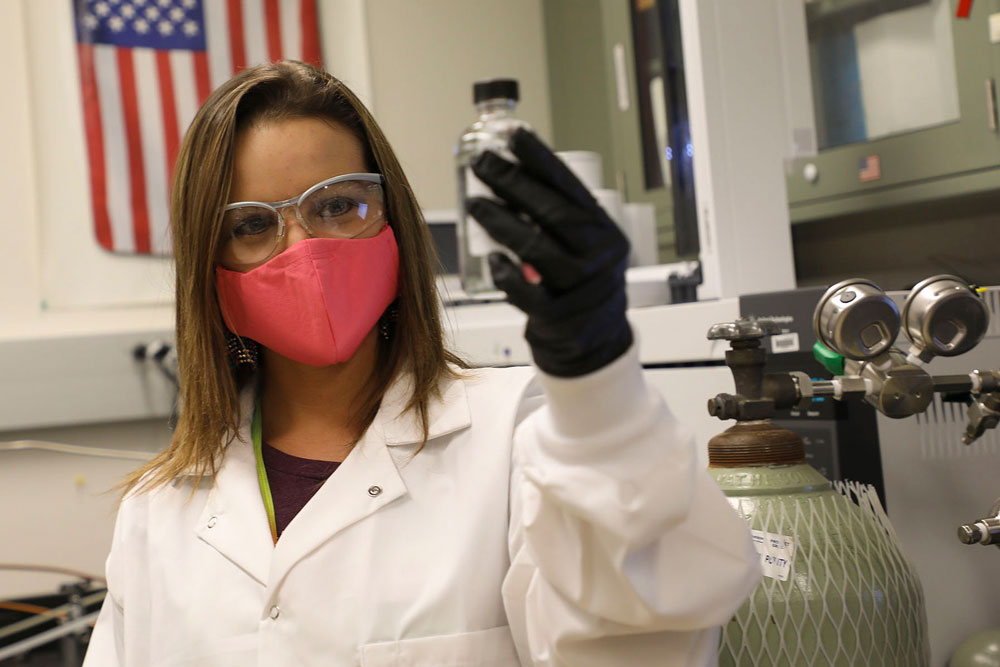
August 2, 2020; Los Angeles Times and Washington Post
In recent weeks, COVID-19 has hit Latinxs and Native Americans particularly severely, report Reis Thebault and Alyssa Fowers in the Washington Post, based on their review of CDC (Centers for Disease Control and Prevention) data.
“The disease now accounts for nearly 20 percent of all deaths among those groups, higher than any other race or ethnicity in recent weeks,” Thebault and Fowers write.
Thebault and Fowers note that the trend for increased Latinx fatalities can be found in both “hot-spot states, and in states where the total number of deaths has decreased,” but the shift in cases to Sun Belt states has clearly deepened the impact of the virus on the nation’s Latinx population. As Thebault and Fowers observe, it is in states where the Latinx share of the population exceeds the national average where the pandemic’s impact on the Latinx community is most acute.
Thebault and Fowers also observe that the rate of COVID-19 deaths among the Latinx population appears to be climbing even in specific regions over time. For example, In California, 39 percent of the population is Latinx, while 46 percent of all virus deaths are, but for the last week of June—the most recent data available—57 percent of those who died from COVID-19 were Latinx. A similar story can be told in Texas: Until late June, about 40 percent of COVID-19 deaths were of Latinx residents, roughly the same as the percentage of Latinx residents in the population. In the last week of June, however, Latinx residents made up 57 percent of all Texan COVID-19 deaths.
Carlos Rodriguez-Diaz, a George Washington University public health professor who is lead author of a recent paper published by the Annals of Epidemiology on COVID-19’s impact on the Latinx community, tells the Post that crowded housing, exposure to air pollution, and jobs in the meatpacking industry are three important factors that place the nation’s Latinx population at a high risk for exposure to COVID-19.
In a profile of the Rio Grande Valley in the Los Angeles Times, Molly Hennessy-Fiske reports that as of August 1st, “826 people had died of the disease in the valley, about 12 percent of the state total, even though the area accounts for about five percent of Texas’ population. Half of the 6,837 Texans who died of COVID-19 were [Latinx], according to state health figures, although [Latinxs] make up about 40 percent of the population.”
She adds, “Many of those dying are uninsured and have underlying health conditions. And in Texas, the largest state to refuse to expand health insurance under the Affordable Care Act, nearly a third of adults under age 65 are uninsured, the highest rate in the country. More than 60 percent of those without health insurance are [Latinx].”
Sign up for our free newsletters
Subscribe to NPQ's newsletters to have our top stories delivered directly to your inbox.
By signing up, you agree to our privacy policy and terms of use, and to receive messages from NPQ and our partners.
In the Houston region, where COVID-19 hospitalizations surged in June before beginning to decline in recent days, ProPublica reports that data released by the Harris County health department showed “a disproportionate share of those requiring hospital care—as high as 65 percent of newly hospitalized patients during some weeks in June—were [Latinx], despite the fact they are 44 percent of the population.”
In the Southwest, Latinx residents are not the only hard-hit community, however, as both Arizona and New Mexico have also seen disproportionate deaths among Native Americans. In Arizona, Native Americans are four percent of residents, but constitute triple that share of COVID-19 deaths. In New Mexico, where Native Americans are nine percent of the population, they make up 75 percent of the state’s COVID-19 deaths.
The Navajo Nation, which straddles the two states, has reported 454 COVID-19 fatalities (out an estimated population of 173,667, according to the 2010 census). A silver lining is that—like New York City, which has a similar COVID-19 fatality rate (23,536 people or about 280 people per 100,000 residents)—public health measures like mandatory masking have reduced COVID-19 cases by more than 75 percent from their May peak.
The success of the Navajo in containing the pandemic speaks to the potential for community responses, combined with dedicated resources, to be effective. Nathan Teismann, a visiting emergency doctor from the University of California, San Francisco (UCSF), who supported the pandemic response in the Navajo Nation, tells Lois Parsley of Vox that there is a lot that can be learned from the Navajo nation’s approach.
The thing that keeps coming back to me is how important it is for a community to come together around a problem, and not just be worried about their own personal liberty or business or children. There, the health of the community at large was primary.
Meanwhile, the pandemic continues to ravage the US. Currently, the Institute for Health Metrics and Evaluation at the University of Washington forecasts that by November 1st, COVID-19 fatalities, if current policies and levels of mask usage continue, are likely to surpass 230,000. The same study finds, however, that with universal masking (defined as 95 percent compliance), that number would be 32,000 less.
Thebault and Fowers warn, “Many experts fear the situation will only get worse in the fall, and they said three factors could influence the severity: colder weather driving more people indoors…a possible flu outbreak that could put even more strain on hospitals and, most pressing, the new school year.”—Steve Dubb











